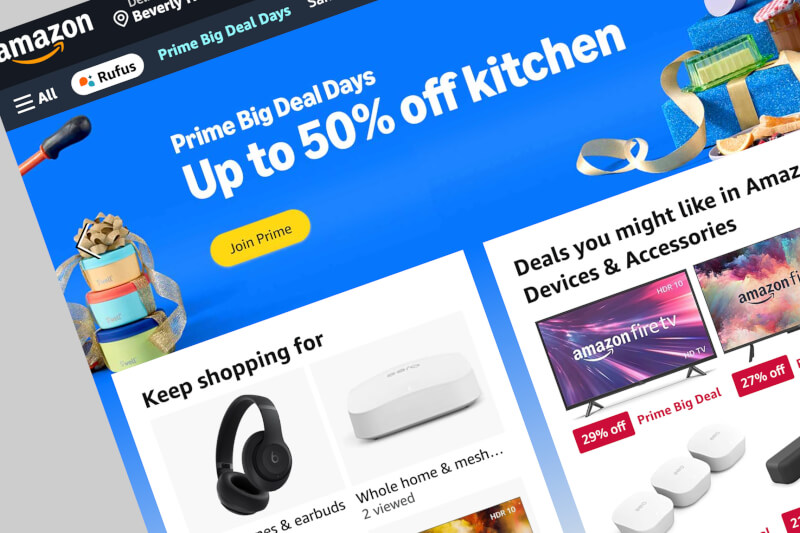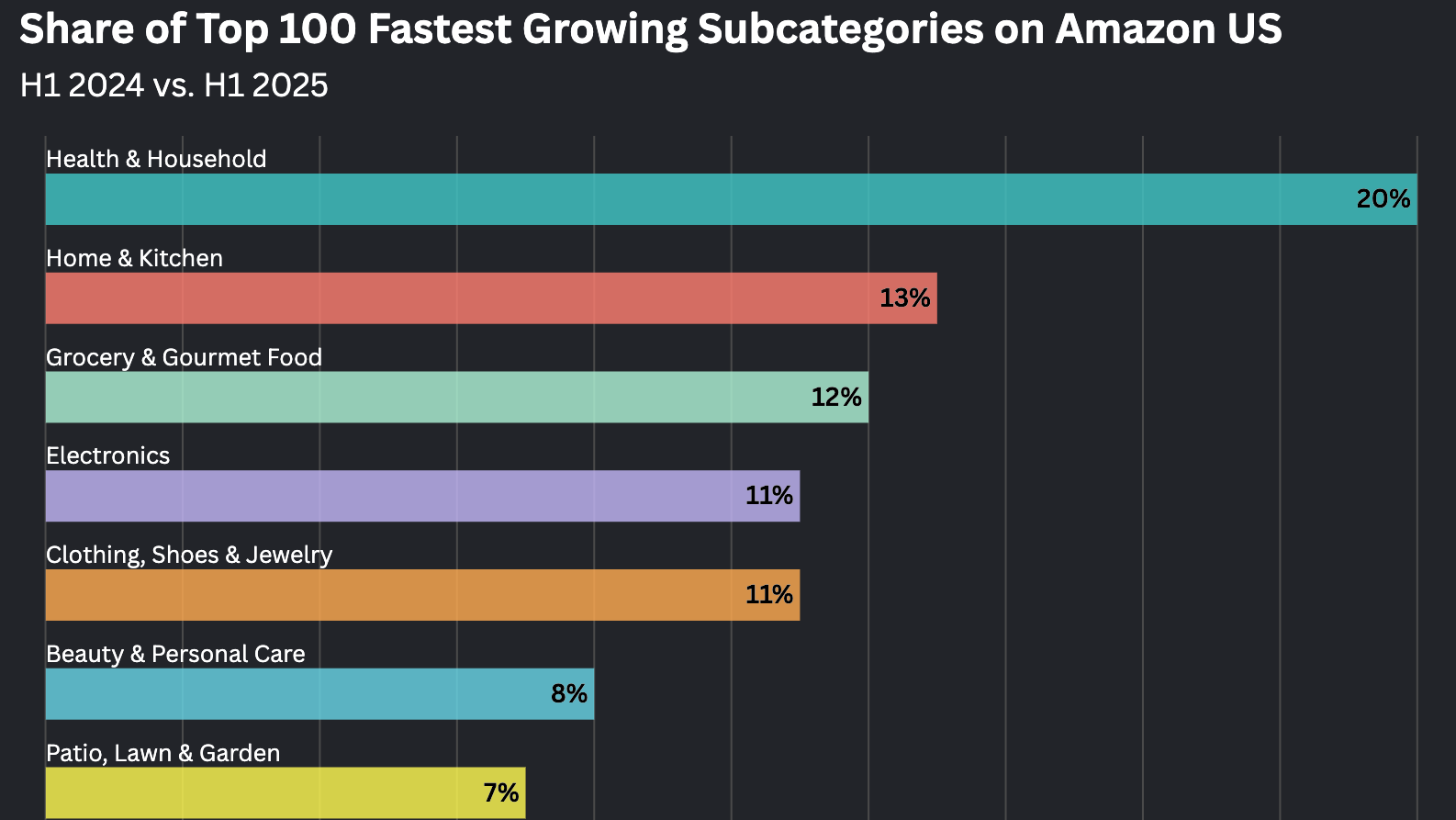
Why We Expect Prime Day Sales to Grow 14% YoY in 2025
In our 2025 Prime Day Preview guide, we outlined our projected 14% average year-over-year (YoY) growth rate for the week of Prime Day in 2025. This guidance takes on additional importance this year given the uncertainty associated with the extension of Prime Day into a four-day event. The novelty of a longer sales period naturally presents its own set of challenges in terms of calculating a meaningful, defensible growth estimate.
So let’s run through each of the metrics and assumptions that went into our projection:
- Based on available data, Amazon is up roughly 6% YoY YTD (Jan-Apr 2025 vs. Jan-Apr 2024)
- Across Momentum Commerce clients, YoY Prime Day growth rates were +24% 2023 vs. 2022 and +14% 2024 vs. 2023
- The two days following Prime Day in 2022-2024 were not meaningfully elevated or depressed compared to surrounding Thursday and Friday averages
- Projecting ~15% YoY growth on the Tuesday and Wednesday of Prime Day is a conservative estimate based on what we’ve seen in previous years
- We’re conservatively projecting ~20% YoY growth on the two net new Prime Days based on the increases observed over the early portion of Turkey 12 last year vs. the comparable period in 2023 when the event was just five-days long
- We can then apply the 6% YoY to the Sunday and Monday pre-Prime Day as well as the Saturday after the fact
- All of the above in a weighted fashion nets out to ~14% YoY growth for the full week
While we feel confident in the logic underlying our estimate it is worth qualifying the figure with two additional notable caveats:
- Tariff impacts on inventory and participation
- Changing tariffs and their downstream impact to inventory and cost structures, has fueled conversations around brands scaling back their Prime Day plans
- The share of products that run discounts has the potential to go down YoY given this environment
- This would naturally make Prime Day less attractive to the average consumer, which could soften growth overall
- Consumer trade-down activity
- We know that consumers are continually trading down on Amazon US in aggregate
- These trends do vary on a category-by-category basis, but the overall volatility introduces two wildly different possibilities from a consumer behavior POV. Namely:
- With consumers more value-conscious, do they flock more aggressively towards Prime Day and deals in order to get sought after bargains?
- Or does an overall desire to spend less depress growth somewhat?
All of the above being said, keep in mind that these are overall, aggregate estimates across Amazon. Individual brands and categories will naturally present a range of revenue outcomes. You will need to make adjustments to tactical elements like bids and targeting during the event itself so you can put your brand in a position to best competitors no matter how the market develops.
Key Lessons for Brands
- Real-time monitoring will be essential as the event unfolds
- If you can’t effectively monitor purchase and conversion trends as they happen (and adjust accordingly), you’re flying blind during the event itself
- While we expect day 3 to be the softest day of the Prime Day event from a sales perspective, this may not be true for your brand or category
- Ensure you have access to data through services like Rapid Retail so you can understand what’s happening every hour and make adjustments as needed
- Pre-seeding demand is going to be critical to getting enough exposure
- As we mentioned in the 2025 Prime Day Preview report, Amazon has continually made the deals page more personalized for consumers over the past several years
- Ensuring that relevant, in-market consumers have had exposure to your products in advance of the event will help even more modest deals be more visible when it matters most
- Consider using tools like AMC and channels like Amazon DSP, Sponsored Display, or Connected TV in the weeks leading up to Prime Day to get in front of these shoppers early and ‘prime the pump’ for Prime Day itself





